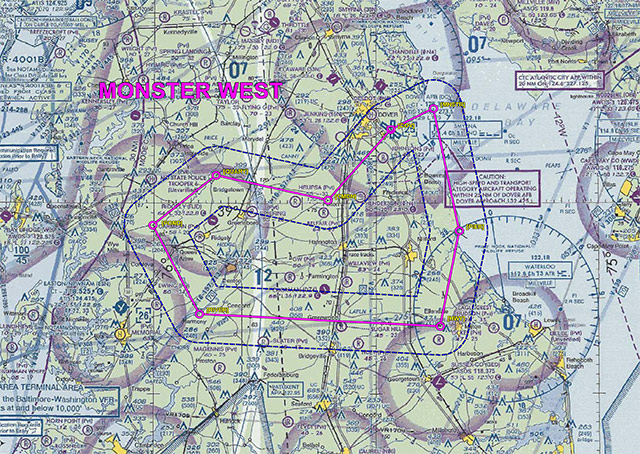
AOPA submitted formal comments to the U.S. Air Force suggesting safer alternatives to a proposed low-level, uncharted training route for large C-17 transport aircraft operating near Dover Air Force Base in Delaware.
The association has been engaged in talks with the U.S. Air Force to recommend a more suitable location for the route that would avoid negative impacts to general aviation while meeting the requirements of the local unit. “The area underlying the restricted area further south would be an ideal location for their local low-level training routes,” said Rune Duke, AOPA director of airspace and air traffic.
Duke said the proposed Monster West locally defined VFR route below 1,500 feet agl would bring large, heavy jets at speeds of up to 250 knots to the same altitudes and areas frequently trafficked by small, slow GA aircraft. He thanked concerned pilots and airport operators for submitting their comments to AOPA about the negative effect the proposed training route would have. These comments are helpful as the association discusses the impacts with the military proponent, he said.
“The route is within close proximity to about 40 airports which magnifies the impact of these large aircraft operating so close to traffic pattern altitudes,” Duke wrote to the Air Force’s Steven Seip. “The proposed Monster West route appears to be similar to the existing Slow Route 800, 801, 844, and 845... AOPA believes these existing routes should be utilized whenever possible due to their similarities with the proposed Monster West route.”
Duke said ongoing discussions with local Air Force representatives helped the association better understand the training requirements and led to enlightened mitigations and alternatives. “AOPA discussed the proposal with the U.S. Air Force and opportunities to reduce the impact on GA, as well as how to ensure comprehensive outreach. AOPA stands ready to support their education/outreach initiatives.”
AOPA previously reported that the military proposed the training route because it would allow pilots to conduct low-level, land-based navigation in a “simulated GPS-degraded environment.” The proposed airspace configuration would cover more land area than the existing Monster Mile locally defined VFR route, which is primarily situated over the Delaware Bay. The military contends that other nearby locally defined VFR routes and slow routes do not offer the same benefit as a new route that would begin and terminate at Dover Air Force Base.
Duke’s letter explained that the area around Dover is too congested for routine low-altitude operations and instead proposed “the area within and below the Patuxent Restricted Area complex, which is comprised of R-4002, R-4005, R-4006, and R-6609, for low altitude operations. As is stated in the mid-air collision avoidance pamphlet provided by the 436th Airlift Wing at DOV, ‘the potential for a mid-air collision is extremely high’ in the area around DOV due to congestion.”
Duke said the association supports the U.S. Air Force’s need to train but believes the removal of the Monster West route near Dover and the creation of a new, more southerly, Slow Route or locally defined VFR route will reduce the negative effect on GA operations while still allowing the military to train realistically.
The Monster Mile moniker refers to Dover International Speedway’s steeply banked one-mile race track that challenges NASCAR drivers.
Please share your comments with AOPA.



